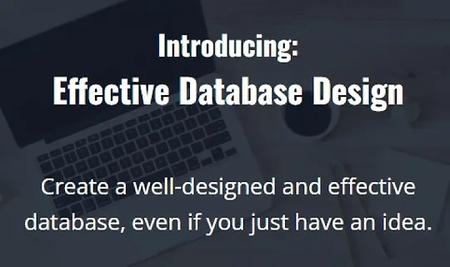English | MP4 | AVC 1920×1080 | AAC 44KHz 2ch | 16 Lessons (1h 4m) | 118 MB
Create a well-designed and effective database, even if you just have an idea.
Before I tell you all about this program, let’s make sure you’re a good fit.
If you are:
- A data analyst that occasionally creates tables for your work
- A database developer or professional who creates or designs tables for an application or system
- A software developer that works with a database for an application and wants to get the best design that meets your requirements
You’re in the right place!
Effective Database Design will give you the roadmap, examples, and instructions to ensure you have a well-designed database.
By the end of this program, you will have…
- A Good Understanding of an Entity Relationship Diagram
Learn and understand the type of diagram that is used to design a database, and create one using the example in the course or your own database. - A Database Design Based On Your Requirements
Design a database using good practices and techniques to meet your specific requirements. - Validate Your Design
Learn how to check that your design caters for many different scenarios, and make changes if required. - Convert Your Design to SQL Queries to Create Your Tables
Learn how to write SQL statements from your database design to get your database created, so you can start working with it.
What’s Inside Effective Database Design
Module 1
Introduction
In this module, you’ll learn what the course is about, how to easily create a list of the requirements for your database, and how to create the type of diagram we’ll be using in this course (an Entity Relationship Diagram).
Module Highlights:
- Learn how to write down the requirements of your database, which are used to design the database in this course
- How to create a new diagram to capture your database design
Module 2
Design a Database
In this module, you’ll learn how to translate your requirements into a database design. We’ll start with adding a single table, adding attributes to the table, add more tables, relate the tables together, and then repeat these steps for all of your requirements.
Module Highlights:
- Add a table to your design based on your first requirement
- Learn how to determine which attributes should be added to your table, and add them to your design
- Update your design for all of your requirements
- Relate your tables to each other using the most appropriate relationship type
Module 3
Test the Design
In this module, you’ll learn how to test that your design will work and meet your requirements. You’ll come up with some scenarios for the data to be stored, and follow a checklist of things to analyse on your database.
Module Highlights:
- Capture a range of different scenarios that you want the daabase to handle
- Learn how to determine how each of the scenarios is handled by your database
- Make adjustments to your database design based on what you learn
Module 4
Convert to SQL
In this module, you’ll learn how to take your database design and use it to create an SQL script. This SQL script can be used to create the tables and insert data into your database – whether it’s Oracle, SQL Server, MySQL, or PostgreSQL.
Module Highlights:
- Write SQL statements to create the tables you need, including how to relate the tables
- Insert data into your tables using SQL
- Write SQL queries to view your data
Table of Contents
1 Welcome
2 Your Requirements
3 Creating a Diagram
4 Add Your First Table
5 Add Attributes
6 Relate Your Tables
7 Repeat These Steps
8 Considerations
9 Capture Scenarios
10 Model the Scenarios
11 Follow a Checklist
12 Create a Table
13 Write All Statements
14 Add Some Data
15 View Your Data
16 Conclusion
Resolve the captcha to access the links!
